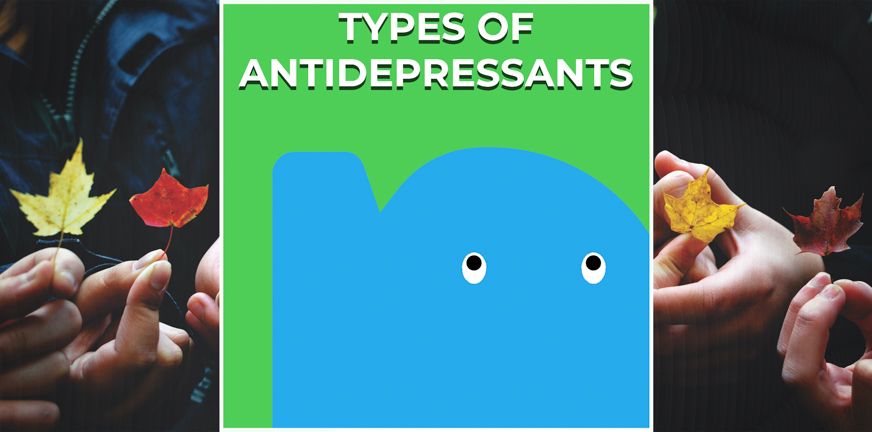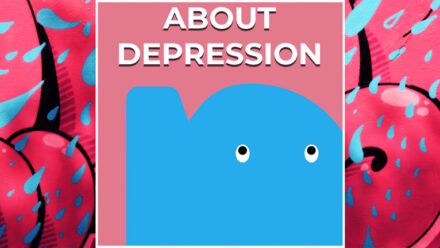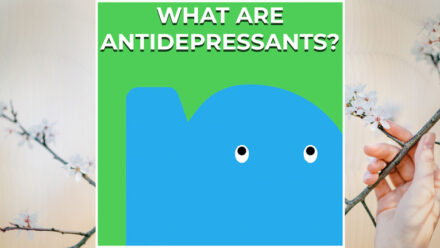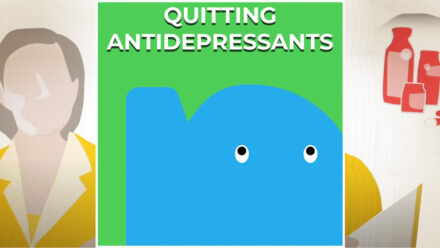
There are many different medicines against depression, but they can be grouped into four different types of antidepressants. This page can tell you more about the four types, how they work and their possible side effects.
The four types of antidepressants
- SSRIs: selective serotonin reuptake inhibitors;
- TCAs: tricyclic antidepressants;
- SNRIs: serotonin–norepinephrine reuptake inhibitors;
- MAOIs: monoamine oxidase inhibitors.
Each of these types of antidepressants is thought to impact the balance of serotonin and noradrenaline in the brain. However, to what degree and how serotonin and noradrenaline are related to depression in the first place is highly uncertain and even controversial. Nevertheless, the difference between these types is mostly in their mechanism of action: the exact way they are hypothesized to restore the hypothesized “neurochemical balance”. For instance, some types prevent neurotransmitters from being broken down (MAOIs), while others make them stay active between brain cells longer (SSRIs).
Because SSRIs tend to cause the least side effects, these are generally the first choice, followed by a TCA. Usually, MAOIs are used only after all other medicines have been ineffective. This is because people who are on MAOIs have to stick to a specific diet and avoid certain foods. Using MAOIs together with other medicines (including SSRIs, TCAs and certain pain medicines) can also be dangerous and even deadly. Therefore MAOIs are only prescribed to you if your doctor is convinced you can strictly follow the accompanying diet and other lifestyle advice.
What type of antidepressant and which kind works best and for whom is highly individual. There are no guarantees about the side effects you might notice or how the medicine is going to work for you. And it may be difficult to get off the antidepressant due to withdrawal symptoms.
This means that the first medicine you get, might not immediately be the best for you personally.
SSRIs: selective serotonin reuptake inhibitors
SSRIs are used for treating depressive mood problems, but also for anxiety, panic and obsessive compulsive disorders (OCD). The following examples are the most used SSRIs. Listed by their active ingredient, with trade names in brackets:
- Fluoxetine (Prozac);
- Fluvoxamine (Fevarin);
- Paroxetine (Seroxat);
- Sertraline (Zoloft);
- Citalopram (Cipramil);
- Escitalopram (Lexapro);
- venlafaxine (Effexor – in low dosage).
SNRIs: serotonin–norepinephrine reuptake inhibitors
SNRIs are like SSRIs in the way they work. They are used for treating depression and chronic pain. The following examples are the most used SNRIs. Listed by their active ingredient, with trade names in brackets:
- Venlafaxine (Effexor – in higher dosages);
- Duloxetine (Cymbalta);
- Reboxetine (Edronax).
TCAs: tricyclic antidepressants
TCAs are used for treating depression, panic and compulsion disorders, and migraine. They usually take two to four weeks to work. Because TCAs belong to the older generation of antidepressants, they tend to cause more side effects than newer types of antidepressants. The following examples are the most used TCAs. Listed by their active ingredient, with trade names in brackets:
- Clomipramine (Anafranil);
- Desipramine (Pertrofrane);
- Dosulepin (Prothiaden);
- Doxepin (Sinequan);
- Imipramine (Tofranil);
- Maprotiline (Ludiomil);
- Amitriptyline (Tryptizol);
- Nortriptyline (Nortrilen).
MAOIs: monoamine oxidase inhibitors
MAOIs also belong to the older generation of antidepressants. They are not much prescribed anymore because they can be dangerous in combination with certain foods and other medicines. Nevertheless, MAOIs can be highly effective for some people, as long as they are taken safely. They work differently than SSRIs and SNRIs and therefore can provide a solution after these types of antidepressants have been ineffective.
MAOIs are only used when:
– the other types of antidepressants do not work
– if the use is able to strictly follow the accompanying diet
– no other antidepressants are taken at the same time.
The following kinds of MAOIs are still being prescribed sometimes:
- Phenelzine (Nardil);
- Tranylcypromine (Parnate);
- Isocarboxazid (Marplan).
Food advice when taking MAOIs
MAOIs prevent the breakdown of tyramine: a chemical that regulates blood pressure. This can lead to high concentrations of tyramine in the blood, causing constricted blood vessels and rising blood pressure. People who take MAOIs must therefore avoid foods or drinks that contain lots of tyramine.
When blood pressure rises very suddenly, this can cause a brain haemorrhage (a bleeding in the brain, also called a stroke) and this is life threatening. The main symptoms of a dangerous rise in blood pressure are: sudden and strong headache, and heart palpitations (a hard, fast and/or irregular heartbeat). Sometimes it also causes nausea, vomiting, sweating and stiffness of the neck.
To prevent such a dangerous rise in blood pressure, people who use MAOIs have be on a “tyramine-restricted diet”. If the user follows this diet properly, the risk of blood pressure problems is almost zero.
Tyramine is a natural ingredient of many foods that are high in protein, such as milk, yoghurt, butter, cheese, meats, fish, eggs, yeast products and fermented soya products. Tyramine levels are low in fresh high-protein foods, but high in products that are preserved for a longer while already and spoil easily.
Go to this website for a detailed food advice when taking MAOIs.
Extra information:
More information on specific antidepressants can be found at Medlineplus.gov (in English and Spanish).




